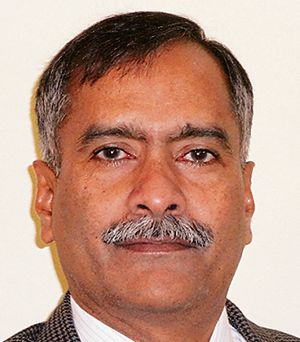The hard power capability of the IAF should not be adversely affected by the clamour to stick to aatmanirbharta.

Air Vice Marshal Manmohan Bahadur retd

The world has seen the robust Indian Humanitarian Assistance and Disaster Relief (HADR) capability in the past two decades through the tireless flying done by the IAF’s (Indian Air Force) transport aircraft fleet flying great distances in the neighbourhood — and many times to distant lands too. The IL-76 was the workhorse of this effort in the past but now it is the C-17 and C-130 that hog the limelight. Planned for acquisition in the beginning of this century, when one political party was in power in Delhi, the project, however, fructified when another party had taken over the reins of running the government.
Similarly, the Sukhoi 30, inducted in 1997 by the Deve Gowda government on plans made earlier by the PV Narasimha Rao administration, would be the backbone of our nation’s deterrence posture for many more decades. The induction schedule of the Rafale fighter jets has followed a comparable timeline. Likewise, the present government would also plan many projects that would strengthen India’s hard power in the coming years.
There is, thus, a continuity that gets mandated in defence procurements, and since deterrence and war-fighting capability accretion takes decades to build, there must be a continuum too in policy making. As India builds up its hard power through the aatmanirbharta campaign to face its challenging security environment, a recent statement of the Vice Chief of the Air Staff (now the Air Chief designate) made at an air-power seminar gains salience; the Vice Chief had remarked that, “aatmanirbharta is what we are riding on, but this self-reliance cannot be at the cost of the nation’s defence.” Wise words they are in the current stridency of misplaced nationalism vis-à-vis the self-sufficiency campaign; they need an analysis, lest their import is lost in the cacophony of our robust political atmosphere.
The aatmanirbharta campaign is indeed noteworthy in India’s desire to attain self-sufficiency in arms to prevent being at the mercy of supplier nations who have a history of arm-twisting to meet their geopolitical plans. Thus, the negative lists of imports and positive lists of items to be bought only from indigenous sources are indeed welcome, but with a rider; these directions cannot be at the cost of hollowing up of the fighting potential of the three services. The media has highlighted innumerable examples of projects slipping up on timelines and costs that reveal the continuing trend by R&D (research and development) and production agencies of promising more than their capability and expertise to bag armament contracts. The Vice Chief’s statement is a public acceptance of the prevalence of this malaise. And, if another example is needed, then the present delay in the supply of Tejas Mk1A fighters to a squadron-deficient IAF should drive home the point.
The delay in Tejas Mk1A deliveries has been attributed to the delay in supply of the F-404 engines by the US manufacturer, General Electric (GE). The supply of Apache helicopters to the Army, too, has been delayed by a year. One hopes that this has nothing to do with India’s assertion of its relations with Russia in the Ukraine-Russia imbroglio, despite US opposition. The problem is that the follow-on Tejas Mk2 (a conventional design) is also being planned around a higher power F-414 engine from GE who, incidentally, is also setting up a plant with supposedly 80 per cent transfer of technology to make the engine.
Next in line for the IAF is the futuristic Advanced Medium Combat Aircraft (AMCA) whose Mk1 version would have the same 98 kN thrust F-414, followed by a Mk2 version with an indigenous engine producing a higher 110 kN of thrust to give true fifth-generation capability to the AMCA. The AMCA prototype is expected in 2028 — pushed from earlier pronouncements of 2024 and then 2026. Logically, and hopefully, the Tejas Mk2 prototype would come before this new AMCA target date.
This, then, is the reality of a situation where the IAF has placed all its eggs — for the next 40 years at least — in the Hindustan Aeronautics Limited /Defence Research and Development Organisation basket while juggling with its depleting squadron strength. The statement of IAF’s Vice Chief about aatmanirbharta versus national defence, thus, merits serious consideration. If one pays attention to his full speech made at the air-power seminar, one would notice that it actually highlights the IAF’s thrust to whole-heartedly support indigenous products.
Design and development work is moving but to catch up with the rest of the world would require policy changes to ensure assured funding and for hiring the best Indian brains, presently working for foreign aeronautical companies. Salary should not be a roadblock if this ghar wapasi attempt is to bear fruit. Incidentally, one reason for the Chinese advancements in technology has been their successful luring back of their bright students from American and Western universities and technology firms.
Our much-lauded private sector, too, needs to risk its own money in R&D and not wait for government funding only. And, the government must make processes less cumbersome, else it would be status quo as hitherto.
And an offbeat suggestion, please take the Opposition along in this endeavour, as it has an equal stake in the defence of the nation. And, it could well be holding the proverbial can in the future, if inductions do not happen in time.
It is good to see the IAF increasingly participating in exercises abroad and hosting multi-national ones at home. What should not be lost sight of, however, is that the hard power capability of the IAF that would carry India’s fight deep into enemy territory, is not adversely affected by the clamour to stick to aatmanirbharta even with projects getting delayed. The last thing one wants is a capability asymmetry trap, as wars are fought with weapons in hand and not with good intentions and misplaced nationalism.
